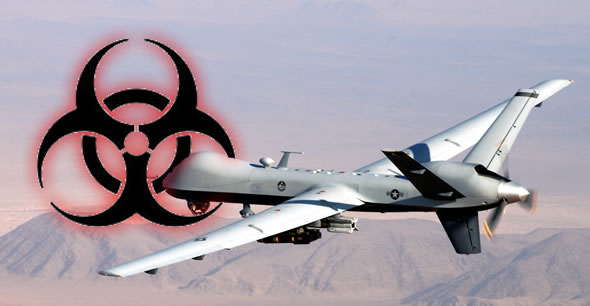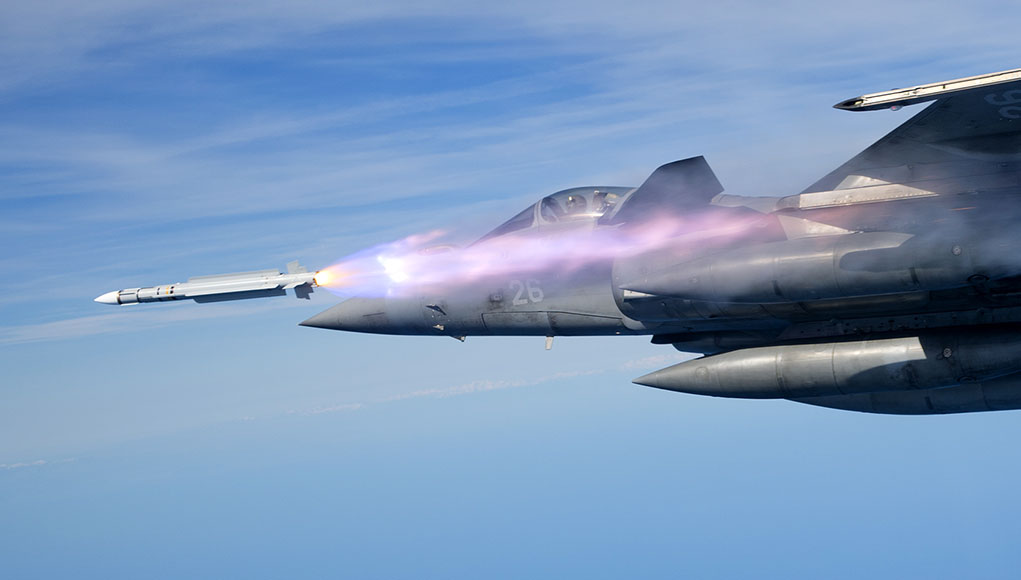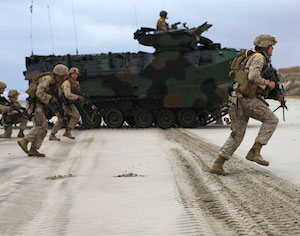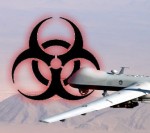
Spyware may have Compromised Killer Drones Missions
A computer ‘Keylogger’ spyware (virus) has infected the cockpits of America’s Predator and Reaper drones, logging every keystroke pilots were doing while remotely flying their missions over Afghanistan and other warzones, Wired danger Room reports. The virus was first detected nearly two weeks ago by the Creech Air Force base security; however, the virus resisted multiple efforts to remove it from Creech’s computers, network security specialists say. The virus has not prevented pilots at Creech Air Force Base in Nevada from flying their missions overseas. While the ground control systems (GCS) are maintained separated from other networks to prevent such attacks, security experts suspect the virus has penetrated the system through removable hard drives used to load map updates and transport mission videos from one computer to another. The virus is believed to have spread through these removable drives. Drone units at other Air Force bases worldwide have now been ordered to stop their use. A senior Air Force source with knowledge of the drone program and familiar with the virus that was caught in recent weeks told FoxNews.com that Wired’s story is “blown out of proportion” and “vastly overwritten.” However, as the Iranians combating the Stuxnet at Natanz enrichment plant could tell, you should never underestimate your opponent when he is inside your system.

CPOF to Become More Collaborative
The U.S. Army Command Post of the Future (CPOF) system, born at General Dynamics C4 Systems as a DARPA technology demonstration program continues to evolve, the company has recently been awarded a two-year $78 million contract maintaining the systems’ continued evolution. As part of the planned enhancements, the system’s collaboration capabilities will be expanded, with users able to see and share information from multiple control systems, including ground, aviation, logistics, fires and airspace control systems. The system will also integrate the ‘next-generation command and control architecture’, increasing the number of concurrent users sharing the same information from hundreds to thousands. This will allow users who are purposely or inadvertently disconnected from the network to continue their collaborative efforts without interruption to operations or loss of data. The work done to enhance the collaborative command and control capabilities for the CPOF system directly supports the Army’s Mission Command Collapse initiative in which several mission command and control systems are collapsed into a consolidated product line. (Defense-Update)
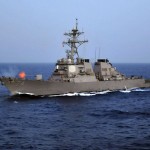
Supporting Europe’s Missile defense Initiative, U.S. Navy to Position Four AEGIS ships in Rota, Spain
The U.S. Navy is relocating four AEGIS destroyers to be stationed at Rota in spain. These AEGIS ships will support NATO’s missile defense effort, alongside the planned positioning of radar stations and, eventually, land-based AEGIS missile systems in Romania, Poland, and Turkey. According to Spanish President José Luis Rodríguez Zapatero, by 2013, Spain would “decisively support a large part of the naval portion” of the [European missile defense] system. The system, the Spanish president added, will have a positive economic impact on Rota, requiring the presence of 1,100 military staff and their families, representing 1,000 jobs. (Defense-Update)

KMAX to Begin Hauling Cargo for Marines in Afghanistan Next Month
October 5, 2011: The U.S. Marine Corps plans to deploy the unmanned K-MAX to Afghanistan in November 2011. Following a successful evaluation of the unmanned helicopter, during the five-day Quick Reaction Assessment for the U.S. Navy’s Cargo Unmanned Aircraft Systems (UAS) program where the helicopter demonstrated the delivery of 6,000 pounds of cargo per day. K-MAX will be the Navy’s first-ever cargo unmanned aircraft system to deploy in an operational environment. The deploying team consists of active duty mission commanders, air vehicle operators and company employees has recently concluded training and flight tests at its base in Twenty-nine Palms, Calif., and is currently preparing the aircraft for shipment into theater. (Defense-Update)

THAAD Hits Two Targets on the First Unit’s Operational Qualification Test
The U.S. Army Terminal High Altitude Area Defense (THAAD) missile system performed a successful intercept today, scoring almost simultaneous kill of two targets. The test was conducted at the Pacific Missile Range Facility (PMRF) on Kauai, Hawaii, as part of the The test, part of the first THAAD unit’s initial operational qualification phase. (Defense-Update)

Infantry Brigade Combat Teams to Get M777 Lightweight Howitzers
The U.S. Department of Defense is ordering 70 lightweight M777 howitzers worth $134, to begin equipping the U.S. Army’s Infantry Brigade Combat Teams (IBCTs). The new order takes the U.S.-UK production program at BAE Systems to Oct. 2013 and a total of 1071 guns. Weighing less than 4.2 tons, the M777 is the world’s first artillery weapon to make widespread use of titanium and aluminum alloys, resulting in a howitzer which is half the weight of conventional towed 155mm systems. As a result, it can be deployed by medium-lift helicopters quickly and beyond the reach of roadside bombs to otherwise inaccessible areas, extending its reach over the theater of operations. BAE Systems’ facility at Hattiesburg, Mississippi, is responsible for final integration and testing of the weapon system. The prime contract management of the M777 program and manufacture and assembly of the complex titanium structures and associated recoil components are undertaken at Barrow-in-Furness in the United Kingdom.
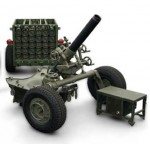
ATK – GD-OTS Team to Deliver the marines with Precision Mortar Bombs
October 4, 2011: ATK and General Dynamics Ordnance and Tactical Systems are teaming to offer a full-up solution for the U.S. Marine Corps’ requirements for the rifled, 120mm Precision Extended Range Mortar (PERM). The new guided munition will provide the Corps’ Expeditionary Fire Support System (EFSS) towed-mortar the option to engage point targets from ranges of 16 – 20km. ATK will be the prime contractor to the USMC for the PERM Engineering and Manufacturing Development (EMD) program, providing the guidance fuze technology, to be combined with the propulsion and warhead subsystems delivered by General Dynamics. ATK is already providing a similar solution for the U.S. Army 120mm mortars. (Defense-Update)
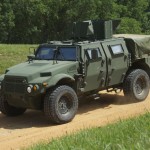
Army Sets JLTV Target Price around $250,000
October 4, 2011: The Army has also capped the vehicle’s Average Unit Manufacturing Cost (AUMC) for the base vehicle configurations across the family of vehicles within the range of $230,000-270,000 (FY11 dollars), with additional $65,000 paid for the B-kit Armor. The service released a draft Request for proposal for the vehicle’s Engineering and manufacturing Development (EMD) phase, setting the stage for selecting the preferred manufacturer for producing 20,750 vehicles by 2015. (Defense-Update)
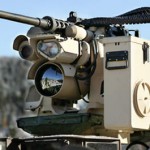
Army to Cut CROWS Procurement by Half
October 4, 2011: The U.S. Army is cutting $1.6 billion from the Common Remotely Operated Weapon Station (CROWS), built by Norwegian defense Kongsberg, from $2.6 billion down to $970 million. The reduction reflects other reductions in procurement of armored vehicles, such as the JLTV and GCV. The Army has been using the CROWS primarily with combat vehicles while protected gunner kits were employed on tactical and patrol vehicles such as HMMWVs and MRAPs. To date, the Army has put over 11,000 CROWS systems in the field and the plan was to buy another 7,000 with orders split between two suppliers. However, the actual number has been reduced to 3,000 and. (AOL Defense) Commenting on the planned cut, Kongsberg said the change expresses that there will be only one supplier and its CROWS design is still the chosen one for the competition.
BAE Systems, Northrop Grumman to Develop new Anti-Jam GPS Sensors
October 04, 2011: The U.S. is embarking on a development of a future Global Positioning System (GPS) receiver to better cope with hostile electronic attacks. Last week the Air Force awarded two contracts worth $47 million each to BAE Systems and Northrop grumman, for the development of ‘navigation warfare’ (NAVWAR) Sensor that could replace military GPS receivers used on aircraft and missiles. The system is developed under the Air Forces’ the Navigation Warfare Technology initiative, also known as The Navigation Trinity (TNT), designed to maintain Air Force the freedom of action under extreme GPS countermeasures. (Defense-Update)
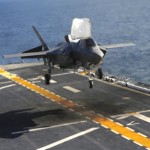
F-35B Performs First Landing at Sea
October 3, 2011: Marine Corps test pilot Lt. Col. Fred Schenk recorded a major milestone yesterday, flying his F-35B (BF-2) to a safe landing on the flight deck of USS Wasp’s (LHD-1), the first at sea vertical landing for the Marine Corps’ F-35 JSF version. (Defense-Update)
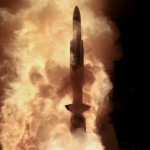
New Divert Systems Considered for the SM-3 Block IIB Kill Vehicle
October 3, 2011: The Missile Defense Agency will evaluate two different ‘liquid divert’ technologies considered the new divert system for the ‘Next Generation AEGIS Missile’, to reduce the technological risk associate with the weapon’s advanced kill vehicle. Two contracts worth about $14 million each were awarded to Aerojet and Pratt & Whitney Rocketdyne, Inc., both will test specific liquid divert and attitude control system technologies for the next two years. (Defense-Update)
Previous Reports:

